

|


|
|
1/16 Scale Electric On-Road Car:
Nikko 1/16 Touring Cars
|
Introduced by Nikko circa 1984, the 1/16 Scale Touring Car chassis came originally with a Mercedes Benz 190E bodyshell and later available RTR over the following years with a wide range of bodyshell options, sold as the "Street Cars" series, "Street Mayhem Tuner" series, WRC "Racing Series" and from circa 2002 the "Fast & Furious" drift car series.
The "Street / Mayhem Series" including: Audi R8, Citroen DS3, Dodge Charger, Dodge Charger RT, Dodge Charger Daytona, Ford Fiesta, Ford Focus, Ford Mustang, Mazda RX8, Mini Countryman, Nissan 350Z, Nissan GTR, Nissan Silvia, Peugeot 207, Porsche 911 GT3 RS, Porsche 911 Carrera 4S, Porsche Cayenne, Renault Clio, Subaru Impreza, Toyota Supra and Volkswagen Polo.
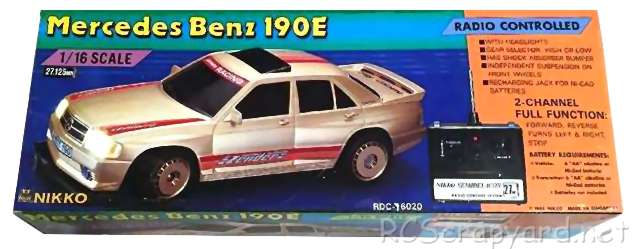
The "WRC Racing Series" including: Citroen DS3 (WRC), Ford Fiesta (WRC), Ford Focus (WRC), Mini Countryman (WRC), Peugeot 207 (WRC), Subaru Impreza (WRC) and Toyota Supra (WRC}.
The "Fast & Furious Series" including: Dodge Charger (Drift), Dodge Charger RT (Drift), Dodge Charger Daytona (Drift), Ford Mustang (Drift), Nissan 350Z (Drift), Nissan GTR (Drift), Nissan Silvia (Drift) and Subaru Impreza (Drift).
The original model is based on a molded plastic chassis, front independent suspension, wheel alignment adjustment, 2-speed (high / low), bushings and bearings. Later versions vary slightly.








|
|
|

★ Nikko Street / Mayhem Series Cars ★
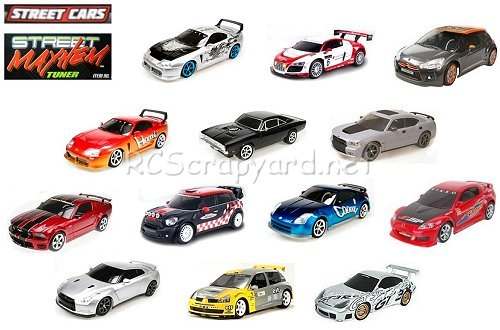
★ Nikko WRC Racing Series Cars ★
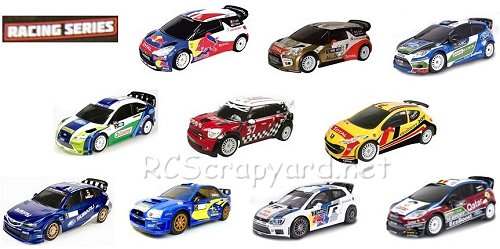
★ Nikko Fast and Furious Series Cars ★
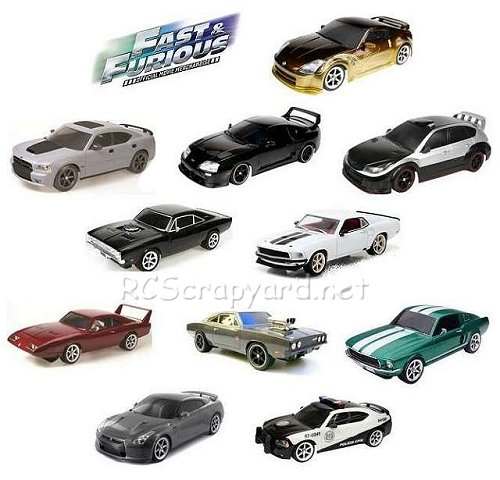
★ Nikko 1/16 Touring Cars Chassis ★
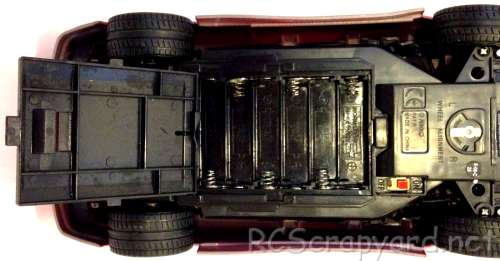
★ Nikko 1/16 Touring Cars Chassis ★
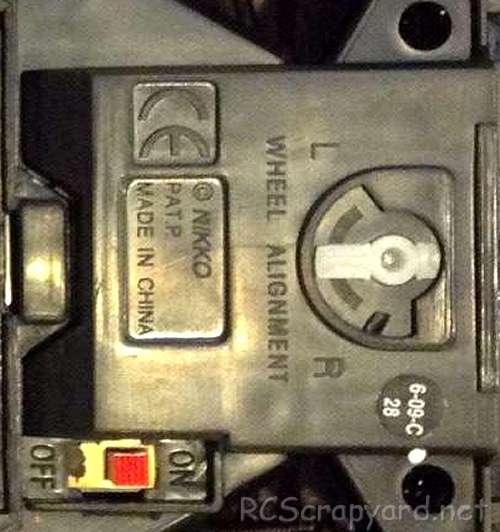
|
Buying a Used Radio Controlled Model
|
|
Manufacturers and Brands Catalogued, Listed and Reviewed by RC-Scrapyard.
At present, the RC Model Manufacturers, Brands and Distributors covered by us are: ABC Hobby, Academy, Acme Racing, Agama Racing, Amewi, Ansmann Racing, ARRMA, Team Associated, Atomic RC, Axial, AYK, Bolink, BSD Racing, Capricorn, Carisma, Carson, Caster Racing, Cen, Corally, Custom Works, Durango, Duratrax, ECX - Electrix, Exceed RC, FG Modellsport, FS-Racing, FTX, Fujimi, Gmade, GS-Racing, Harm, HBX, Helion, Heng Long, Himoto Racing, Hirobo, Hitari, Hobao, Hong-Nor, Hot Bodies, HPI, HSP, Intech, Integy, Jamara, JQ Products, Kawada, Kyosho, Losi, LRP, Maisto, Mardave, Marui, Maverick, MCD Racing, Megatech, Mugen, New Bright, Nichimo, Nikko, Nkok, Ofna, Pro-Pulse, Protech, PTI, RC4WD, Redcat Racing, RJ-Speed, Robitronic, Schumacher, Seben, Serpent, Smartech, Sportwerks, Step-Up, Tamiya, Team-C Racing, Team Magic, Thunder Tiger, Tomy, Top Racing, Traxxas, Trinity, Tyco, Vaterra RC, Venom, VRX Racing, WLToys, X-Factory, Xmods, Xpress, Xray, XTM, Yankee RC, Yokomo, ZD Racing and Zipzaps. |
|
Hints, Tips and Information How to Charge Rechargeable Batteries for Peak PerformanceNi-Cad (Nickel Cadmium) Batteries
1/ All Ni-Cad Batteries have to be Discharged soon after use. This is to avoid the dreaded "Memory" effect that on subsequent re-charges can cause a momentary drop in performance during a race. A simple discharger can be made from a car 12v bulb.
Ni-Mh (Nickel Metal Hydride) Batteries
1/ Never charge Ni-Mh batteries at a current higher than 4.5 amps. Although these batteries can give a higher voltage than Ni-Cad Batteries, they are much more sensitive and easy to damage if charged too quickly. |
|
Hints, Tips and Information
Driving On Road
The basic driving style most commonly used for all forms of on road, tarmac and carpet racing, involves using the full width of the road available, and cutting each apex as tight as possible, whilst keeping complete control of the car on the track. The style, often referred to as "Rounding" looks quite simple to those watching, but to get it right needs good hand eye coordination and lots of practice. |
|
RC Models:
|
Radio & Motors: |
Other
Accessories: |